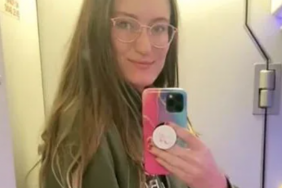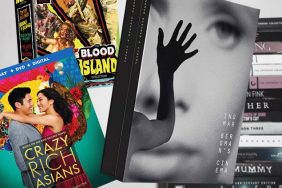Artwork: Carrie Mae Weems. Color, Real, and Imagined. Archival inkjet print with silk screened blocks of color. 34” x 50”
American photographer Carrie Mae Weems got her first camera when she was 21 as a birthday present from her then-boyfriend. She remembers, “At that point politics as my life, and I viewed the camera as a tool for expressing my political beliefs rather than as an art medium.”
Also: CraveOnline Exhibit Reviews
Over the past four decades, Weems has developed a complex body of art that employs photographs, text, fabric, audio, digital images, installation and video to explore the complexities African American life and history in her artwork. It is a mission she has chosen, and to which she has dedicated her life. Weems observes, “Despite the variety of my explorations, throughout it all it has been my contention that my responsibility as an artist is to work, to sing for my supper, to make art, beautiful and powerful, that adds and reveals; to beautify the mess of a messy world, to heal the sick and feed the helpless; to shout bravely from the roof-tops and storm barricaded doors and voice the specifics of our historic moment.”

Carrie Mae Weems. Untitled (Man and Mirror). Gelatin silver print. 28.25” x 28.25”
Weems’s gift for storytelling enables her to investigate the intricacies of family relationships and gender roles, as well as the histories of racism, sexism, class and political systems. “The camera gave me an incredible freedom. It gave me the ability to parade through the world and look at people and things very, very closely,” Weems reveals. This ability to embody the spirit of her stories makes her work transcendent, moving across time and place as only the soul can.
A new exhibition of her work is currently on view in Carrie Mae Weems: Considered at the SCAD Museum of Art, Savannah, SC, now through June 12, 2016. Guest curated by Isolde Brielmaier, Ph.D., Considered brings together works from Weems’s series Ain’t Jokin’(1987-88), Blue Note (2014-15), From Here I Saw What Happened (1995-96), Kitchen Table (1990), Museums (2006), Not Manet’s Type (1997), and The Louisiana Project (2003). Each series addresses disparate yet deeply connected themes that explore the complexities of black experience in America since its earliest days. Weems believes, “Photography can still be used to champion activism and change.” She constructs each image to explore the truths of human experience, evoking the profound sensations of hope, despair, solitude, pride, strife and optimism.

Carrie Mae Weems. A Distant View. Gelatin silver print . 20” x 20”
Weems observes, “Art is the one place we all turn to for solace. We turn to it constantly, whether you are listening to music, or pop in a film; you want to escape reality, and if you thinking deeply, you want to engage in art in a complex way. Art allows us to navigate the more complicated parts of our lives in a way that is more palpable. We don’t go to the movies just to see a movie; we go for the experience. I’m very interested in the experience. Art has saved my life on a regular basis. I wanted to offer that experience to children, to enlist them, to show them the possibilities that are in the arts, to persuade them to pursue it for both their own personal salvation and for changing the way we are understood.”
All photos: © Carrie Mae Weems. Courtesy of the artist and Jack Shainman Gallery, New York
Miss Rosen is a New York-based writer, curator, and brand strategist. There is nothing she adores so much as photography and books. A small part of her wishes she had a proper library, like in the game of Clue. Then she could blaze and write soliloquies to her in and out of print loves.





